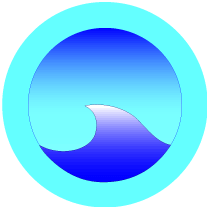
The University of Athens is involved in Workpackage 1 (WP1) "Remote sensing and modelling of atmospheric inputs to the Mediterranean Sea", specifically in Tasks 1.2 and 1.3.
Task 1.2
Duration: 36 months
Specific Objectives: Dust uptake-transport-deposition model will be improved to obtain seasonal deposition scheme. The RAMS atmospheric model will be used together with Lagrangian-type dispersion and photochemical models for identification of paths and characteristic scales of anthropogenic particles. In addition, the atmospheric models with the physicochemical modules for Hg will be improved and simulations for transport and deposition will be performed.
Methodology: The Saharan dust cycle (uptake-transport-deposition) will be examined with the aid of the most recent version of a modelling system comprising modules dedicated to dust processes and developed through a previous EU programme. This task needs soil classification data, and therefore the collection and processing of data identifying the solid rock areas in the Saharan Region. Existing algorithm of the dust model will be improved, especially on uptake mechanisms, size distribution and gravitational settling. The concept of soil temperature in the dust uptake scheme will be introduced. Improvements in the dust deposition scheme will be performed, especially over the sea. Seasonal-type simulations will be performed in order to estimate the deposition of Saharan dust over the Mediterranean waters.
In addition to the above, regular weather and dust event forecasting will be performed during the experimental campaign periods, which will be particularly useful for the work developed by other members of the consortium and particularly those involved in the Fast Response Experiments (WP 3).
The characteristic paths and time scales of the anthropogenic aerosols will be studied for the Mediterranean Region. The dust atmospheric model together with an adapted RAMS code will be used in combination with a Lagrangian-type dispersion model (HYPACT) and a photochemical model (CAMx) to study the patterns of transport of air pollution from Europe to the Mediterranean Region.
Heavy metal (e.g. mercury) transport and deposition processes will be treated separately for specific cases. Model results will be intercompared with the routine and campaign-type of observations (WP 2). Receptor-oriented type of modelling will be performed for specific periods of the field work, particularly periods concerned by sampling cruises or dust events (WP 2 and 3), in order to calculate "areas of influence". Inverse Lagrangian will be extremely helpful to determine where the air masses came from during the previous few hours or days, allowing thus to identify possible sources or areas with specific emissions.
Task 1.3
Duration: 36 months
Specific Objectives: Dust uptake-transport-deposition model will be coupled with a 3D oceanographic model to study dust dispersion and deposition within the marine environment.
Methodology: The atmospheric model will be adapted to permit a coupling with a 3-D oceanographic model (Princeton Oceanographic Model). The coupling between the two models will be done in order to supply the dust deposited over the sea-surface into the oceanographic model of the Mediterranean Basin. The oceanographic model with a nominal resolution of 1/8x1/8 degree (eddy resolving) will be used to calculate 3-D concentration fields in the waters and additionally the deposition of dust onto the seabed. The properties of the dust in the water column will be studied. Runs of concentration fields will be compared with field measurements of SPM (task 4.1.) to calibrate the approach. This is a first attempt, at least in the Mediterranean, of an extremely innovative approach that could provide, in the future, monitoring tools for the marine dispersion of airborne, particle-bound contaminants.
All these modelling simulations will be tested against field results provided by the other partners (data collected from the atmospheric stations and from the marine experimental sites, WP 2-4) as well as with the remote sensing analysis (task 1.1).
Return to the home page of ADIOS by clicking on the icon at the top of this page.